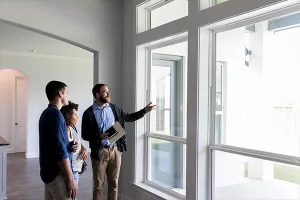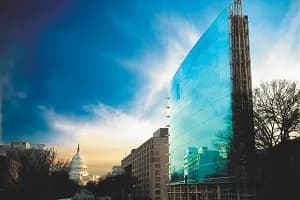Written by Matt Norris, Director, Building Healthy Places, Urban Land Institute
Nearly everyone agrees that parks are a crucial component of any community. In fact, 85 percent of U.S. residentspdf identify proximity to parks, playgrounds, open space, or recreation centers as an important factor in deciding where to live. In 2018 alone, voters approved nearly $2 billion in local and state ballot measures for parks and land conservation, with an average 75 percent voter approval.
The COVID-19 pandemic has only further underscored the importance of community outdoor spaces. Parks, trails, streets closed to automobiles, and public plazas have been some of the only places that have allowed people to maintain physical distance while still being able to exercise, relax, play, gather in small groups, or reach key destinations—crucial activities for lowering stress levels, reducing symptoms of depression, and maintaining physical health.

The pandemic has also highlighted the longstanding reality that disparities in park and trail access and quality reflect land use patterns of segregation based on race and other demographic factors. 38 percent of people in the United States lack outdoor spacespdf where they can exercise—a barrier that disproportionately affects low-income African American and Latinx communities.
New Urban Land Institute (ULI) reports provide examples and best practices for improving equitable access to high-quality parks—a key tenet of 10 Minute Walk, a movement led by The Trust for Public Land in partnership with ULI and the National Recreation and Park Association. 10 Minute Walk is working to create a world in which, by 2050, all people live within a 10-minute walk of a park or green space.
Successful Partnerships for Parks: Collaborative Approaches to Advance Equitable Access to Open Space shares lessons and considerations for real estate and other sectors—including public, nonprofit, and philanthropic organizations—on how to jointly create and sustain parks.

Traditionally, parks departments have built, operated, and maintained parks for the long term, but today, public investment in parks is stagnant or declining. Parks and recreation departments often manage huge quantities of land and are responsible for park programming—but have limited or declining budgets. In fact, deferred park maintenance totals more than $1 billion in many large U.S. cities.
Cross-sector partnerships can help bridge the gap between community needs and available public resources for parks. All sectors have something to offer, and increasingly, real estate leaders can play a critical role by creating or operating parks alongside development projects or by contributing funding for nearby parks.
Such multi-sector partnerships can enhance real estate value and, with intentional efforts, also support community health and well-being. Examples featured include 2020 ULI Urban Open Space Award finalist Domino Park in Brooklyn, New York; 2018 ULI Jack Kemp Excellence in Affordable and Workforce Housing Award winner Avenue Place in Houston; and Meadowbrook Park in Prairie Village, Kansas.
"The average resident doesn’t care who builds or operates their park,” notes Scott Gilmore, deputy executive director, Denver Parks & Recreation, City and County of Denver. “They care about having quality green space that is safe, accessible, and welcoming."

ULI’s Successful Partnerships for Parkspdf provides several case studies that outline the following partnership opportunities:
- Save time and money. Leverage real estate development to efficiently enhance park access and quality.
- Capture value. Fund parks by promoting or incentivizing nearby development and directing new tax revenues into park assets.
- Serve residents, advance health and equity. Partner to creatively engage residents and act on locally identified park needs.
- Promote resilience. Build relationships to invest in park infrastructure that advances community resilience.
- Connect people, activate parks. Create physical, social, and cultural connections that link people, parks, and businesses.
Another new ULI report, Pavement to Parks: Transforming Spaces for Cars into Places for Peoplepdf, presents stories from across the United States and around the globe of cities and organizations that have worked to transform or enhance spaces formerly dedicated to cars—parking lots, parking garages, travel lands, and highway underpasses—into parks and open spaces that support recreation, community engagement, social equity, sustainability and resilience, and neighborhood connectivity and revitalization.
Pavement-to-parks conversions provide the opportunity to enhance community connection, promote environmental sustainability, and improve park access for communities that have lacked it. The report challenges readers to think creatively and strategically about underutilized spaces, especially in this current moment, and whether they could be prime places for new parks. Examples include Chicano Park in San Diego, Erie Street Plaza in Milwaukee, and the Depave program in Portland, Oregon.
As a REALTOR®, you can support 10 Minute Walk and equitable access to high-quality parks. Here are a few ways to do so:
- Encourage your Mayor to join the campaign at 10minutewalk.org.
- Advocate for increased financing, policies, and plans to build, renovate, and/or maintain great parks for all. Equitable access to quality parks is essential to your business and the community: great parks make cities more attractive to potential residentspdf, which directly impacts the real estate market.
- Listen to your clients and the broader community and support their ideas and visions for great public spaces.
- Promote proximity to parks and open space in your property listings, including it as an amenity.
- Share the message about the multiple benefits of parks with your networks using the #10MinWalk.













